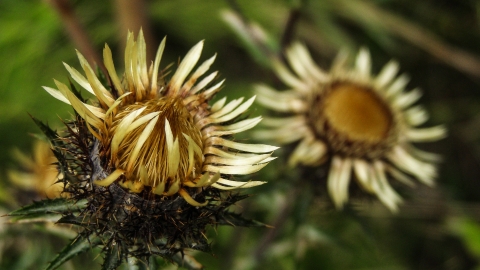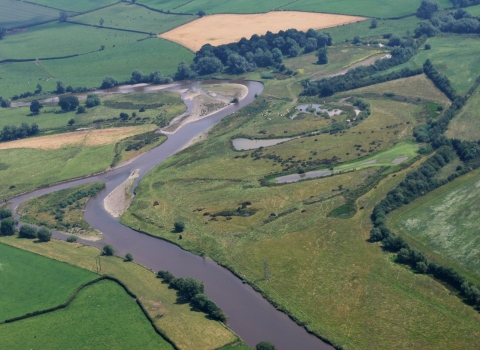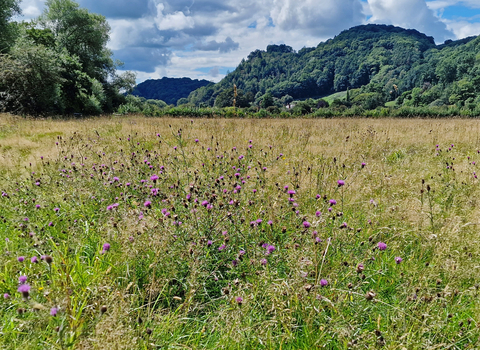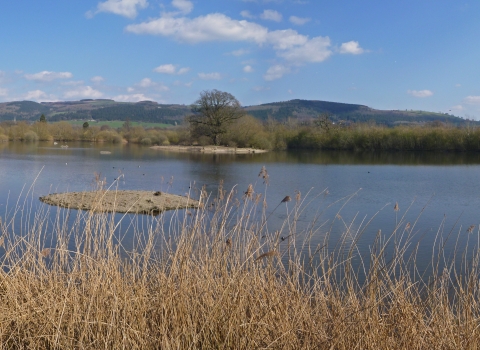Roundton Hill Nature Reserve is accessed by car via a ford and the condition of the ford can be poor, especially during bad weather. It can also be accessed on foot via one of the surrounding footpaths or across the footbridge.
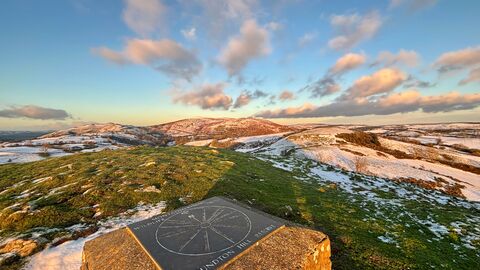
Roundton Hill; Photo: (c) Nicola Berry
Hay meadow at Roundton Hill © MWT/Rob Haigh
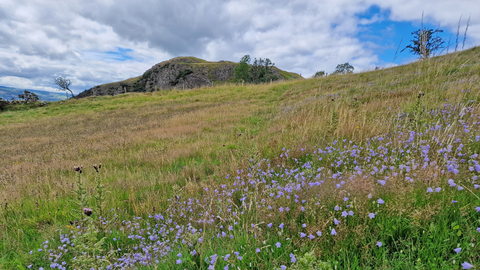
Photo: © Tamasine Stretton
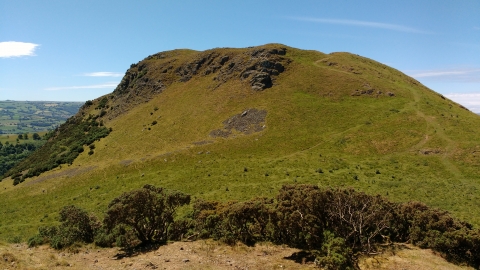
Roundton Hill National Nature Reserve © MWT/Tamasine Stretton
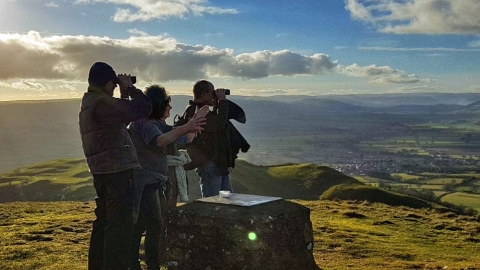
Visitors enjoying the view from the summit of Roundton Hill © MWT/Rob Haigh
Gwybod cyn i chi fynd
Cŵn
Pryd i ymweld
Amseroedd agor
Open at all timesAmser gorau i ymweld
March to AugustAm dan y warchodfa
From the top of Roundton Hill it's easy to see why an Iron Age hillfort was once sited here - the vantage point offers spectacular views across the surrounding countryside. In later years miners worked the hill for lead and barites; today, the old mines provide perfect conditions for roosting bats. The geological and industrial landscapes of Roundton Hill have created a variety of habitats where specialist plants have taken hold. Perhaps the most significant of these are the 'spring ephemerals' - tiny ground-hugging plants that thrive on areas of thin, dry soil.
Around the open hill are fields which are managed traditionally for hay. In spring and summer, these are a riot of colour and packed with insect life. Areas of scrub and woodland on the lower slopes are filled with birdsong in the spring, with threatened species like Yellowhammer, Whitethroat, Pied Flycatcher and Redstart raising the next generation. Dry stone walls provide shelter for invertebrates, small mammals and Common Lizard.
It's easy to see why Roundton Hill has been designated, not only as a Site of Special Scientific Interest (SSSI), but also a National Nature Reserve (NNR). The unusual conditions and diverse habitats support a huge diversity of species, some of which are very rare. Over 300 nationally or locally important species have been recorded here! 200 species of lichen have been recorded and notable plant species include Rock Stonecrop, Knotted Clover, Carline Thistle, Shepherd’s Cress and Upright Chickweed. Two nationally rare species of moss also occur here.
Views from the top of Roundton can be spectacular at any time of year. To catch the ‘spring ephemerals’ you need to get there early – March/April. Spring is the best time to see and hear the birds and summer is perfect for butterfly spotting. In the autumn, look out for fungi, particularly the colourful waxcap species which thrive in the grassland.
Follow this reserve on social media using #RoundtonHill

